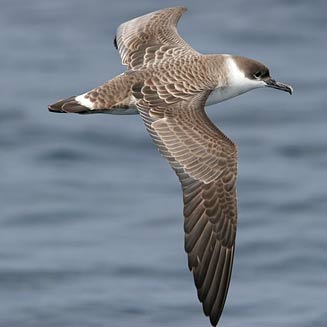Paloma Carvalho & Gail Davoren (University of Manitoba, Winnipeg, Canada) have published open access in the journal Marine Ecology Progress Series on Great Ardenna gravis and Sooty A. grisea Shearwaters associating in the North Atlantic off Canada.
The paper’s abstract follows:
“Prey aggregations are not uniformly distributed, driving predator species to aggregate in specific areas of high food availability. On the east coast of Newfoundland, capelin Mallotus villosus, a small forage fish, migrate inshore to spawn during the summer, providing an abundant food source for marine predators. During this period, non-breeding great shearwaters Ardenna gravis (GRSH) and sooty shearwaters A. grisea (SOSH), both long-distance migratory sea birds, aggregate in coastal Newfoundland, but it is unclear what drives their distributional patterns within this region. Using at-sea surveys, we investigated whether the density and distributional patterns of GRSH or SOSH were influenced by sea surface temperature, depth and fish (prey) density as well as the number of the other seabird species or other shearwater species (i.e. GRSH or SOSH). The presence and number of GRSH and SOSH were positively influenced by the density of the other sympatric shearwater species but were not influenced by the densities of other seabird species. These findings suggest that the benefits of foraging in close association may outweigh costs. Fish density was less important in explaining the presence and number of GRSH and SOSH than depth, as both species were mainly found together in shallow areas (<50 m) along the coast. As fish density was primarily distributed in shallow areas, reflecting predictable locations of and migratory routes to capelin spawning sites, depth (or distance from shore) and the distribution of other shearwaters may provide important cues to locate regions of high prey availability in coastal Newfoundland.”

Great Shearwater
Reference:
Carvalho, P.C. & Davoren, G.K. 2019. Associations of non-breeding shearwater species on the northeastern Newfoundland coast. Marine Ecology Progress Series 627: 1-12.
John Cooper, ACAP Information Officer, 23 November 2019

 English
English  Français
Français  Español
Español